Since 2017—when CNN released a groundbreaking report on migrant slave auctions in Libya, and Italy and Libya’s Government of National Accord reached a migration deal (one of two in the country)—migrants’ misery continues and may have intensified. That agreement was endorsed by European leaders in the “Malta Declaration” with promises to help develop Libyan host communities and “ensure adequate reception capacities and conditions in Libya for migrants.” Little of that is evident today; much clearer is the heavy burden on the country’s 700,000 migrants.
Amnesty International notes that the European Union’s support to the Libyan coast guard has largely blocked the migration route through the central Mediterranean through deals with militias and by preventing NGOs and others from rescuing asylum seekers. But little has been done to improve the situation of migrants. According to Amnesty International’s Heba Morayef, “Policies by EU states to stop people arriving on European shores, coupled with their woefully insufficient support to help refugees reach safety through regular routes, means that thousands of men, women and children are trapped in Libya facing horrific abuses with no way out.”
Human Rights Watch’s Judith Sunderland says, “The EU’s efforts to block rescues and dithering on where rescued people can land, propelled by Italy’s hard-line and heartless approach, is leading to more deaths at sea and greater suffering in Libya. … Instead of discouraging rescues by nongovernmental organizations [and] commercial vessels … EU member states and institutions should ensure that rescued people can be taken to safe ports where their protection needs can be met.” By November 2018, a single rescue ship had been left in the Mediterranean. There were 10 in 2017 but pressure from EU governments, including undercover Italian agents infiltrating aid crews, have intimidated NGOs and sharply curtailed rescues. The Libyan coast guard, aided most directly by Italy and Malta closing off ports, continues to bring back to Libya—often forcefully—those fleeing in precarious conditions on flimsy boats
Human Rights Watch accessed four government detention centers in July 2018, issuing a January 2019 report “No Escape from Hell: EU Policies Contribute to Abuse of Migrants in Libya,” which detailed allegations of severe abuse and dreadfully overcrowded and unsanitary conditions, including for the many minors there. In July 2018, as the crackdown on the Mediterranean intensified, the numbers in official detention centers nearly doubled from 5,000 to well over 9,000. There are many other thousands held in informal detention centers, and migrants continue to be sold in both types of facilities for either their labor and/or ransom from families.
The International Organization for Migration estimates over 670,000 migrants and refugees from 39 nationalities in Libya as of October 2018. Men constituted 88 percent of migrants and 10 percent were minors, of whom one-third were unaccompanied. The top 5 nationalities were Niger (19 percent), Egypt (14 percent), Chad (14 percent), Sudan (12 percent), and Nigeria (10 percent). Libya is both a transit route and a destination for many migrants. When migrants were asked for their final destinations, Libya topped the list in four of the country’s top 10 provinces, including the capital Tripoli. It is also instructive that while some 17,075 migrants were observed or estimated to have arrived in these provinces in September/October 2018, 16,623 left the country. Furthermore, in 2018, 16,750 migrants were repatriated by the International Organization for Migration, and the UNHCR had resettled 4,080 migrants in other countries between September 2017 and January 2019.
Libya continues to be volatile and violent with little direct governmental control, including in many detention centers. Many are beholden to various militias, given little resources, and therefore vulnerable to criminal activity, including human trafficking—differentiated from human smuggling by its use of coercion.
Human smuggling networks into Libya predate the revolution. The International Organization for Migration estimated some 2.5 million irregular migrants in Libya in 2011. Those detained were jailed and condemned to forced labor or a fine. Undoubtedly some abused the system, but there was nothing on the scale of today’s tragedy, and, with the war, most migrants left Libya. However, once state security forces collapsed, lawlessness spread, resources diminished, and a 1,000-kilometer coastline promised unpoliced passage to Europe, hundreds of thousands came, further fueling this humanitarian crisis.
While the Mediterranean route has been curbed, the route remains deadly. In 2015, just 0.33 percent of migrants died in the sea, now nearly 2 percent of people who attempt the crossing die. Predictably, smugglers have switched routes. Over half of migrants arrived in Spain, while less than one-fourth went to Italy. In 2017, most migrants—120,000—had landed in Italy; a small fraction reached Spain.
As Human Rights Watch notes, “The overarching ambition of this policy is to limit arrivals … to EU shores … and they appear willing to accept a Faustian bargain. But what is needed is a reset to a failed strategy.”
Given European public opinion, a meaningful reset is unlikely. Putting the onus solely on a Libya in conflict is neither fair nor realistic. However, Libya could stop detention of migrants, including those apprehended by the coast guard; ensure humane standards; and allow UNHCR to fully exercise its mandate, including access to all migrants. The EU should stop blocking rescue operations at sea and refusing entry, allow migrants to apply for asylum in safe conditions, and comply with its obligations under international law. The EU could also work more closely with the Libyan coast guard to ensure better treatment of those caught at sea. The international community could and should increase resettlement of the 56,000 migrants the UNHCR has registered and increase aid to host communities and migrants.
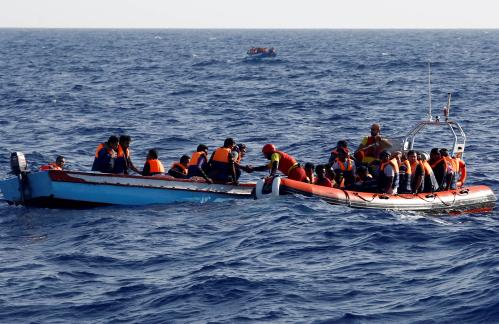
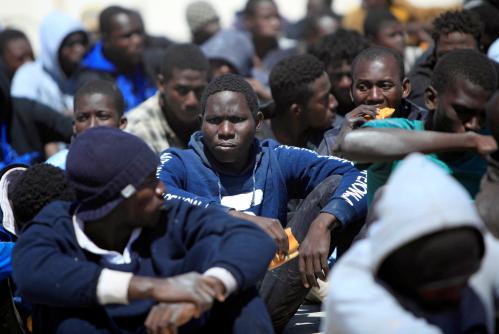
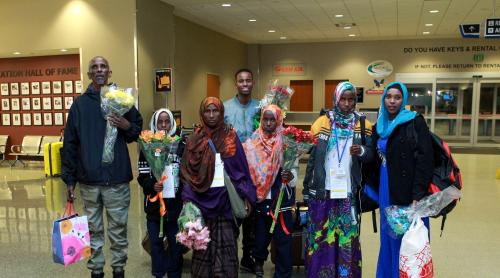

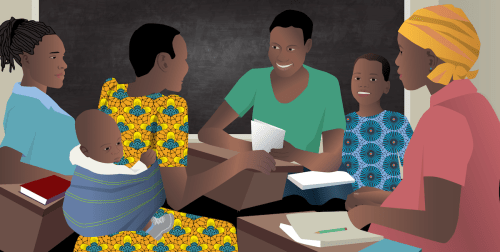

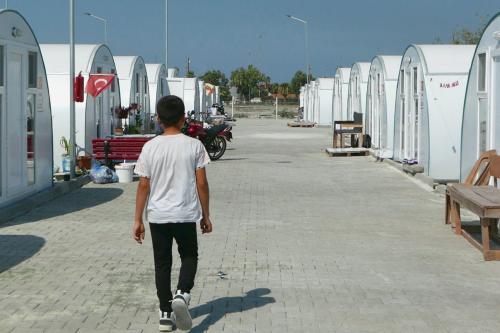
Commentary
The continuing tragedy of migrants in Libya
March 18, 2019